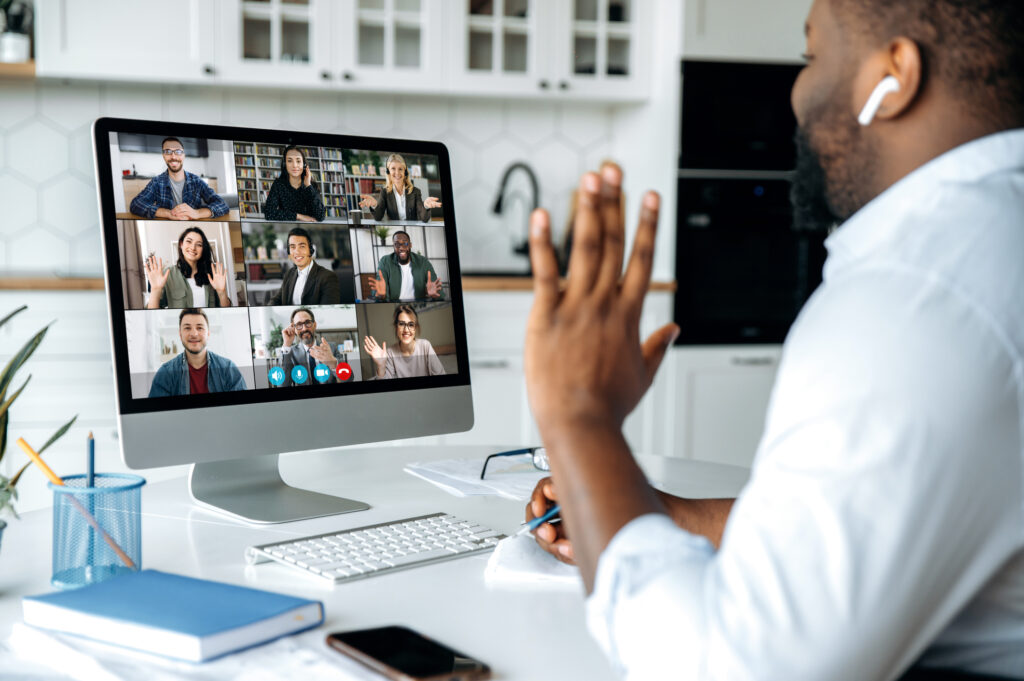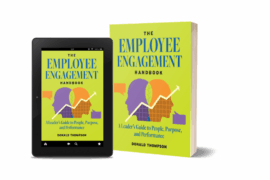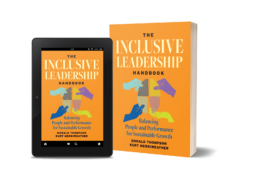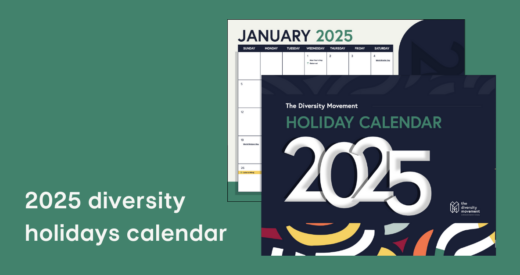Regardless of industry or company size, employee resource groups (ERGs) are critical vehicles for fostering community and driving business outcomes. Proven results of employee-led groups include increased employee engagement, higher productivity, and lower turnover rates. At multinational companies, ERGs can also build strong relationships, nurture feelings of belonging, and increase collaboration within a hybrid or dispersed workforce.
However, navigating different time zones, languages, and cultural norms within a global ERG can lead to miscommunication and exclusion. Competing regional priorities can cause groups to lose focus and fail to achieve their goals. Global ERGs can be highly effective, however their unique needs and characteristics require planning and distinct procedures adapted for a hybrid environment.
The Business Case for Global ERGs

ERGs contribute significantly to business success, particularly in the global workforce. They foster cultural understanding, drive employee engagement, and improve retention rates across diverse demographics. For instance, a multicultural ERG in a global technology company might connect employees from different regions to share best practices for collaborating across time zones and cultural barriers. This ERG could host quarterly webinars featuring employees discussing how local customs influence workplace norms, improving cross-cultural understanding and boosting team cohesion.
Employee-led groups also serve as powerful ways to establish safe spaces, especially for underrepresented employees. Safe spaces are cultivated through intentional design: structured meetings, confidentiality during sensitive discussions, and visible support from executive sponsors. For example, a women’s ERG might host virtual mentoring programs, pairing employees from one location with experienced professionals in another region, offering both career support and a space to share experiences. Shannon Snowden, Experian’s leader for ERGs and wellness, explains: “We’re not just supporting employees; we’re creating a structure where employees can support one another.”
Within ERGs, mutual support builds trust, facilitates dialogue on sensitive topics, and strengthens employees’ sense of belonging—outcomes that significantly improve engagement and innovation.
Best Practices for Managing Global ERGs
Creating and sustaining effective ERGs in a global, hybrid workplace requires planning, inclusive leadership, and the strategic use of technology. Below are essential practices for successful and vibrant employee-led groups:
1. Leverage Technology for Connection and Collaboration
In a hybrid workforce, technology is the backbone for ERG operations. Tools like Microsoft Teams, Zoom, or Slack help organize workflows and facilitate communication. They can also make communication more accessible. For example, video captions and real-time transcription enable colleagues who speak different languages to participate, and recorded meetings allow people from a variety of time zones to watch asynchronously.
Additionally, maintaining a collaborative digital space enables members to share information, collaborate on projects, and access resources like event schedules, policy updates, and recorded training sessions.
2. Adopt Flexible and Inclusive Structures
Flexibility is crucial for ensuring that ERGs are inclusive for a global workforce. For example, a disability or caregiver ERG could raise awareness around the challenges they face by organizing asynchronous storytelling events. Employees record and share personal narratives through videos, allowing colleagues across time zones to engage and watch on their own schedules.
Adapting to regional nuances further strengthens inclusion. This might include scheduling events around regional holidays, offering translated materials, or tailoring content to reflect local preferences and practices. By embracing flexibility, ERGs demonstrate cultural sensitivity and foster greater participation from employees worldwide.

3. Provide Executive Sponsorship and Funding
Executive sponsors are a must-have for successful ERGs, as they can advocate for their group, influence policy changes, and secure resources. For example, an LGBTQ+ ERG might require funding for allyship training. Sponsors can ensure these funds are available while also championing structural changes like gender-neutral restrooms or inclusive benefits like parental leave, adoption, or bereavement policies.
4. Focus on Clear Goals and Measurable Impact
Explicit objectives ensure ERGs remain focused on organizational priorities. A Black professionals’ ERG might establish a goal to host quarterly leadership panels featuring senior Black executives globally. Measuring outcomes, such as increased mentorship participation or more promotions of ERG members, helps demonstrate return on investment.
5. Celebrate Cultural and Regional Differences
Recognizing and honoring cultural and regional diversity is essential for fostering a sense of belonging within global ERGs. This can include organizing region-specific initiatives that reflect local customs, holidays, or community priorities while aligning with the ERG’s broader mission. For example, a racial diversity ERG should host extensive programming both in February–when Black History Month is celebrated in the U.S. and Canada–and October–when Black History Month is celebrated in the U.K. and other parts of Europe.
By tailoring programs to reflect regional nuances, ERGs ensure that all members feel their perspectives and contributions are valued, enhancing engagement and the group’s overall effectiveness.
Challenges and Solutions for ERGs in Hybrid Workforces
While the virtual environment of global ERGs provides flexibility, it also presents challenges, such as a lack of personal interaction and potential miscommunication across cultural lines. To mitigate these, consider adopting the following practices:
- Combat Virtual Fatigue: Reduce the reliance on video meetings by incorporating asynchronous communication methods like shared documents, message boards, or recorded updates. When meetings are necessary, consider alternatives such as audio-only calls or walking meetings to provide a mental and physical break from screen time. These approaches help maintain engagement while minimizing burnout and promoting flexibility in hybrid work settings.
- Build Cross-Cultural Competence: Equip ERG members with training on cultural intelligence to enhance collaboration and understanding within diverse teams. Programs focused on cross-cultural communication are particularly beneficial in global workplaces.
- Maintain Momentum: Establish a rhythm for ERG activities, ensuring that virtual connections remain consistent and meaningful. Regular check-ins, virtual events, and digital newsletters help keep members engaged and informed.
The Future of ERGs in a Global Context
As workplaces evolve, global ERGs will play a pivotal role in shaping inclusive, innovative cultures. Employee-led groups address the immediate needs of dispersed workforces while positioning organizations as leaders in fostering belonging and equity.
As Shannon Snowden explains: “ERGs help connect people across different geographies, showing that we’re all working towards the same goals—even if we’re on opposite sides of the world.” By leveraging intentional strategies, organizations can transform their ERGs into engines of global connectivity and empowerment.
Need support launching or maintaining an ERG? TDM is here to help with resources, customized training programs, and more.
Kaela Sosa is co-founder and Manager, Curriculum and Programming at The Diversity Movement. Her expertise includes psychology, gender identity and sexual orientation and racial identities. Kaela has written and spoken about a range of topics: active allyship, the inclusive talent lifecycle, disability etiquette, LGBTQ+ inclusion and inclusive language. At The Diversity Movement, she leads the development and execution of learning programs, including digital learning, online courses, certificate programs and certification opportunities. Connect with or follow Kaela on Linkedin to learn more.




